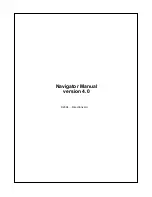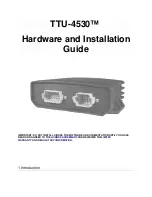
Syntax:
TELE
TELE <first optional data>
TELE <first optional data> <second optional data>
The basic usage is simply TELE, which transmits two WSPR messages, 1 and 2 in the table
above. These are automatically collected and plotted on a live tracking map on the QRP Labs
website.
When you wish to collect additional data from your own sensors and transmit that back to Earth,
you may do so using one or two additional data specifications. Each can consist of EITHER a pair
of numeric expressions, OR a string consisting of not more than 7 characters.
Limitations:
•
Numeric parameter 1 must be in the range 0 to 632,735. Larger numbers are sent modulo
632,736.
•
Numeric parameter 2 must be in the range 0 to 153,899. Larger numbers are sent modulo
153,900.
•
String data is up to 7 characters, which must be 0-9, A-Z or space. Any non-conformant
characters are sent as spaces; any characters in the string after the first 7, are ignored; if
there are less than 7 characters, the string is padded with spaces.
Examples:
TELE
Simply transmits one normal WSPR message, and one telemetry message. This is the minimum
telemetry transmission.
TELE 22425 1342
transmits an additional WSPR message (number 3 in the table above), containing two numbers
22425 and 1342 which could be from your own sensors.
TELE “HELLO” “HANS”
transmits two additional WSPR messages (numbers 3 and 4 in the table above); the first contains
text “HELLO “ and the second contains text “HANS “ (both automatically padded with spaces).
You can use #-tags in the strings, to specify data from any of the available tag codes.
Each of the two parameters <first optional data> and <second optional data> can be either a pair
of numbers, or a string.
4.9.6 OUT statement
Sets a GPIO pin state.
Syntax:
OUT <GPIO pin expression> <Value expression>
U4B operating manual Rev 1.00
44
Содержание U4B Ultimate4
Страница 54: ...U4B operating manual Rev 1 00 54...










































